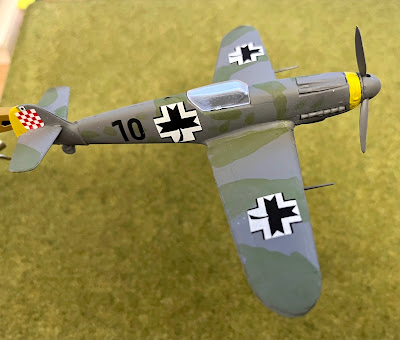This book has been sitting in my reading pile for a while. A book I should read, but anything to do with the Ustaše is bound to be a grim read. Robert McCormick's book looks at the Ustaše leader from an American policy perspective.
Ante Pavelić (1889–1959) was a Croatian fascist politician and military leader, best known as the leader of the Ustaše, a far-right ultranationalist organisation. Founded in the 1930s, the Ustaše advocated for Croatian independence but promoted an ideology of extreme nationalism, anti-Serb sentiment, and fascism. Pavelić led this movement, aligning with Axis powers during the war. He was the Poglavnik (leader) of the NDH from 1941 to 1945. Under his leadership, the Ustaše carried out a campaign of genocide, ethnic cleansing, and forced conversions targeting Serbs, Jews, and Roma, leading to the deaths of hundreds of thousands.
After the Axis defeat in 1945, Pavelić fled Europe with assistance from Vatican-linked networks (known as 'ratlines'). He lived in exile in Argentina, Spain, and other countries, avoiding prosecution for war crimes. In 1957, Pavelić survived an assassination attempt, probably by a Yugoslav agent in Argentina, but suffered severe injuries. He died in 1959 in Spain, likely from complications related to the attack.
The author takes us through this history, focusing on how the USA perceived him. He was largely ignored in the 1930s as the US left the Balkans to the British. However, they noticed his supporters were organised among Croatian migrants in the USA. Before the war, the Ustaše was a fringe organisation with minimal support in Croatia. His involvement in the assassination of King Aleksandar put a spotlight on the organisation in the USA, which included local groups called Domobrans (defenders) and a newspaper. 140,559 Croatians were living in the US and 52,208 Serbians. Most of these migrants just wanted to get on with their new lives, but a small minority raised funds for the Ustaše in the homeland.
Hitler and Mussolini (who had protected him in exile) picked him to lead the puppet state. His programme of ethnic cleansing appealed to Hitler in particular. The British and others were astonished when Pope Pius XII received him, although the USA took little interest. That lack of interest only changed marginally when reports of the mass murder of between 330,000 and 390,000 Serbians came in, along with the establishment of concentration camps. Jasenovac was the third largest concentration camp in Europe, only one of five in Croatia. Ironically, German generals in the Balkans were more concerned about this genocide as it drove recruits into the partisans.
The FBI took more interest in domestic Ustaše during the war but couldn't make any legal cases against their leadership stick. In Croatia, the NDH lost its limited public support and concentrated its resources around Zagreb. The destruction of the Croatian 369th Regiment at Stalingrad further underlined Pavelic's unpopularity. When Croatia was liberated by the partisans and the Russians, Pavelic fled to Austria, then to Italy, before taking a ship to Argentina and the Peron regime. Both the US and British authorities made little effort to catch him despite the Moscow Declaration of 1943 on war criminals. The Cold War was now influencing policy towards Yugoslavia; war criminals became a secondary objective.
The USA does not come out of this book very well. They did little to investigate war crimes when they happened and failed to arrest him after the war. This has implications for the present day when some Croatian nationalists commemorate him, arguing that he can't have been that bad as the US didn't arrest him.
 |
| Painting a Ustaše unit would be a step too far for me. But I built a Croatian Air Force Me109 kit with distinctive markings. |

Yeah, as you say, a particularly grim subject. It’s not a book I’d be buying. Of course, there were real b@5tards everywhere you looked during those times.
ReplyDeleteCheers,
Geoff
True, although Pavelic was an exceptionally wicked mass murderer. Which makes his post-war justice dodging particularly egregious.
Delete